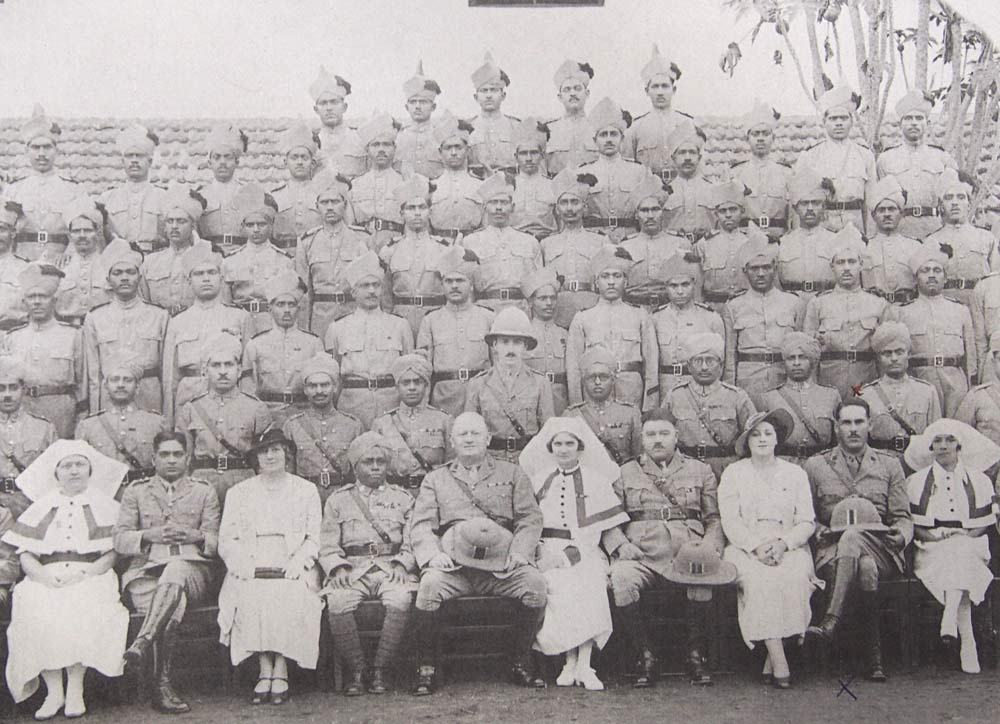 While not a “fighting unit” in the traditional sense, the Indian Medical Service (IMS) was a military medical service in British India. Many of its officers, who were both British and Indian, served in civilian hospitals and the unit saw service in both World Wars – with many of its doctors heading to the front lines with the Indian Army.
While not a “fighting unit” in the traditional sense, the Indian Medical Service (IMS) was a military medical service in British India. Many of its officers, who were both British and Indian, served in civilian hospitals and the unit saw service in both World Wars – with many of its doctors heading to the front lines with the Indian Army.
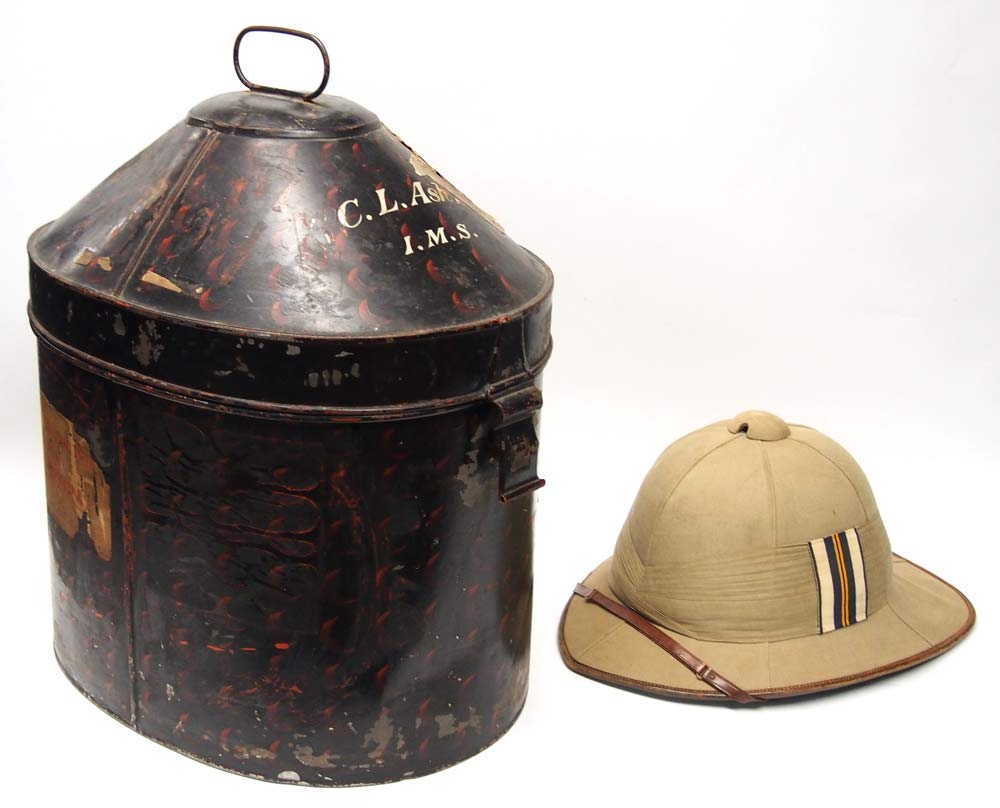
A private purchase Wolseley sun helmet and its original storage tin. Both are named to Clifford Llewellyn Ash (1909-1981), who served as a Lt. in the Indian Medical Service during the Second World War.
One of the doctors was Clifford Llewellyn Ash (1909-1981), a Canadian from Edmonton, Alberta. He interned at the Toronto Western Hospital, where he met Major Shanks (staff doctor) who had been in the Indian Medical Service. Shanks’ influence convinced Ash and classmate Lawson “Scotty” MacCullough to join the IMS. The pair trained in the army as well as tropical medicine outside of London in 1935 – and as a result took part in the funeral procession for King George V. Ash and MacCullough then headed to India in 1936 and they reportedly remained in the IMS throughout the Second World War.
No record has been found to date on where Ash – or MacCullough – served during the war. He survived the conflict and passed away in 1981 at just age 71.
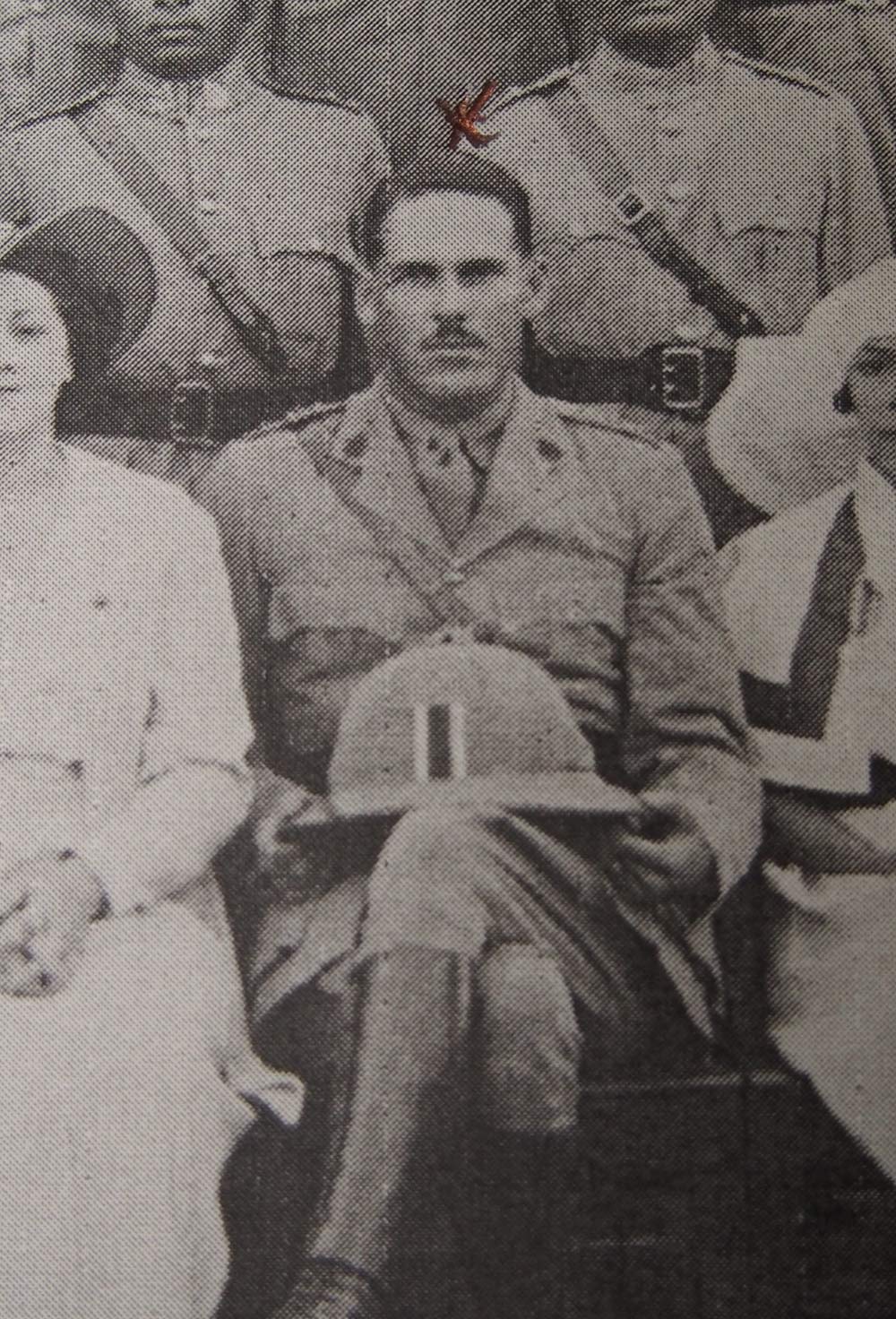
This is believed to be Lt. Ash — sometime in the late 1930s in British India.
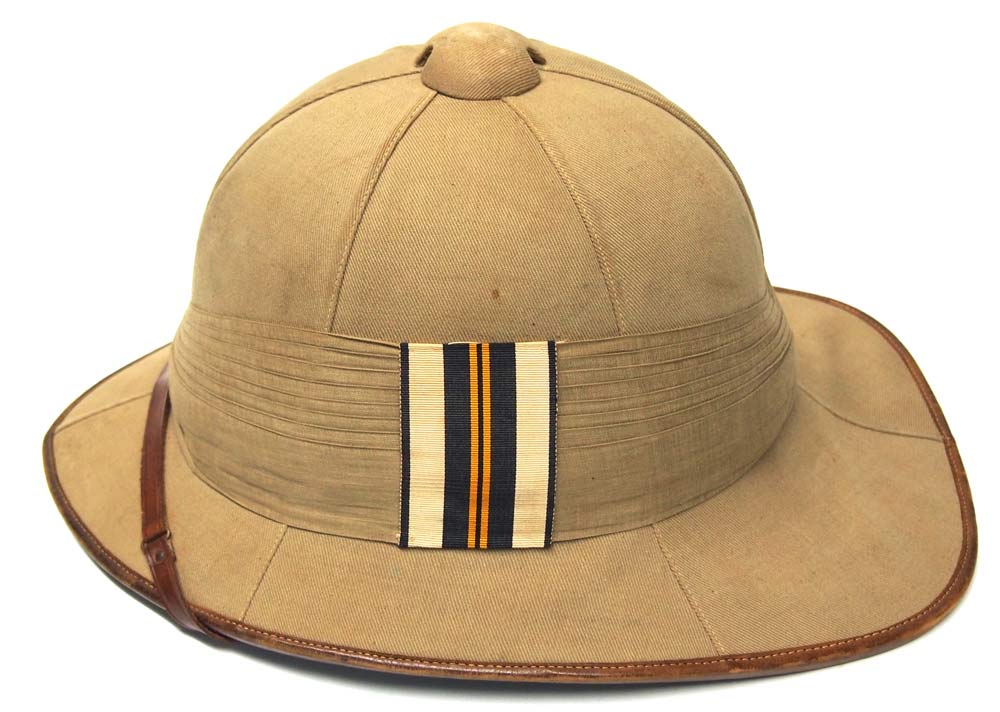
This is believed to be the same Wolseley helmet from the photo. It is hard to make out in the black and white photo, which seems to have been scanned from a book, but the flash does appear to match. The thin blue lines at the edge of the flash are washed out in the black and white photo but otherwise the helmet seems to be one and the same, although other examples do not have the vertical lines (two examples in Stuart Bates’ collection.)
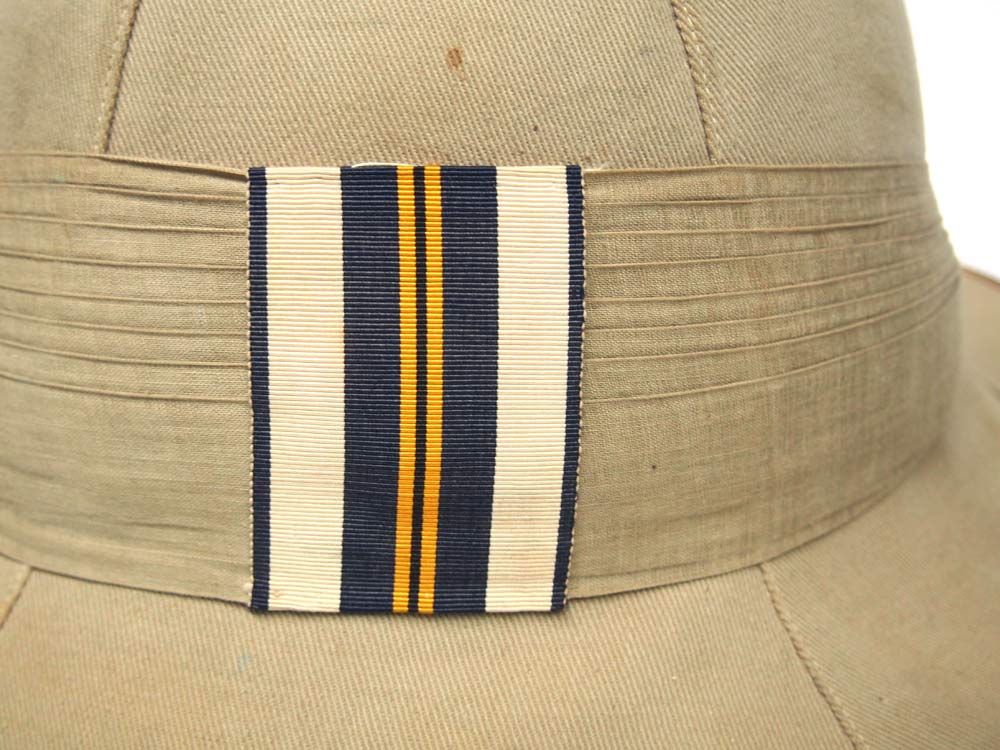
A close up of the unit flash to the Indian Medical Services.
His private purchase Wolseley helmet suggests he was certainly a man of some means. It is a high quality example from the interwar era, featuring a Vero’s detachable headband, foil lining to the inner dome of the helmet and a leather/silk headband. The helmet features a retailer label to “J.S. Pearson, Son & Sargent, Ltd.” along with “Lt. C.L. Ash, I.M.S.” sewn to the silk liner.
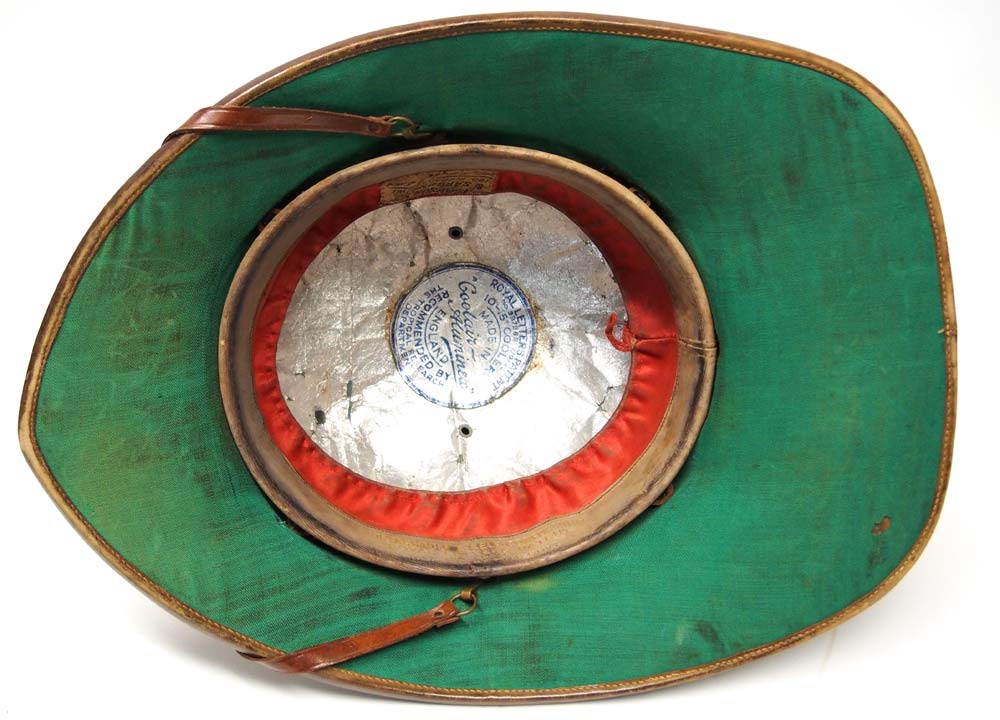
The interior shows a helmet of an officer. It was worn as noted by the staining to the leather band but otherwise in excellent condition. The helmet features a Vero’s Detachable headband and foil lining.
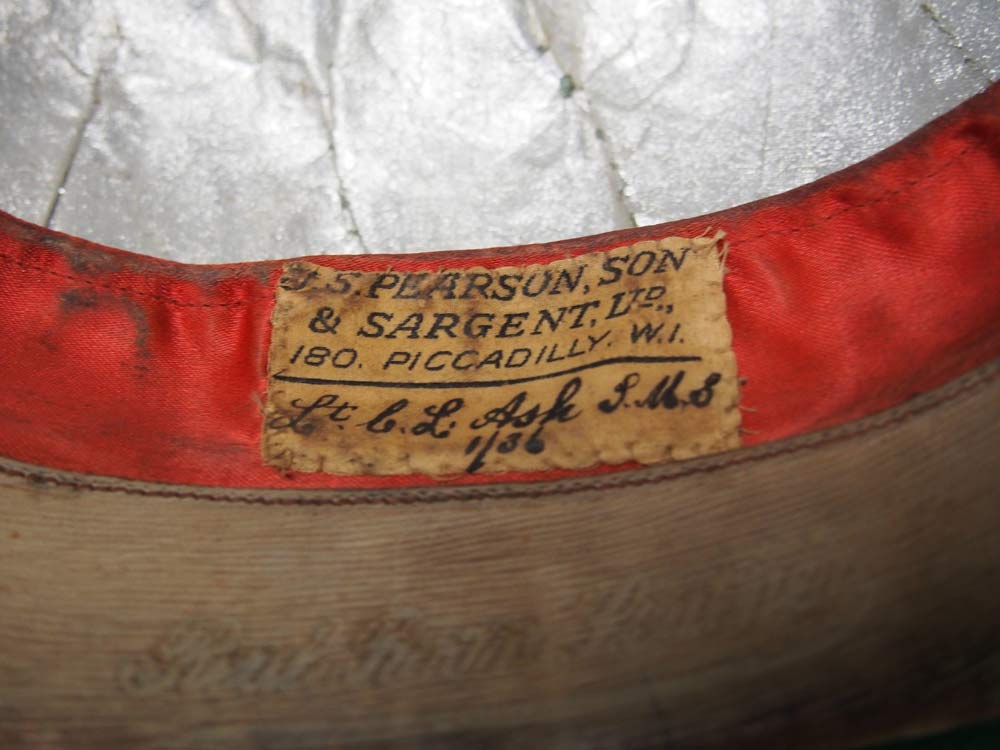
The helmet featuring the name: “Lt. C.L. Ash I.M.S.” The 1/36 could indicate January 1936.
The helmet was acquired with its transport tin, also named to “C.L. Ash, I.M.S.” The tin, which is double sized to hold a helmet as well as visor cap or other headdress, features numerous labels including one with a destination of Bangalore.
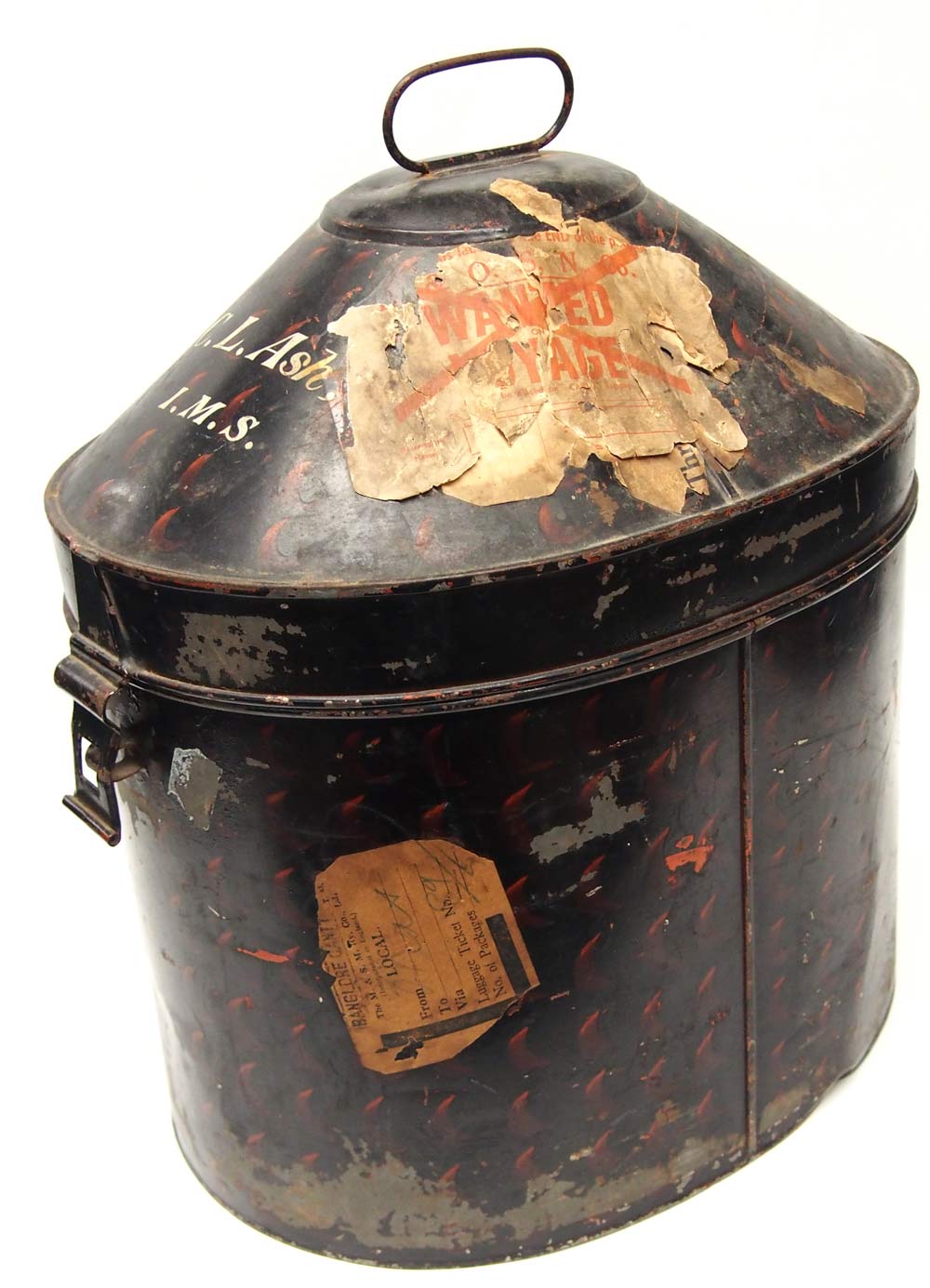
A side view of the storage tin. This was large enough to hold the helmet as well as other headgear.
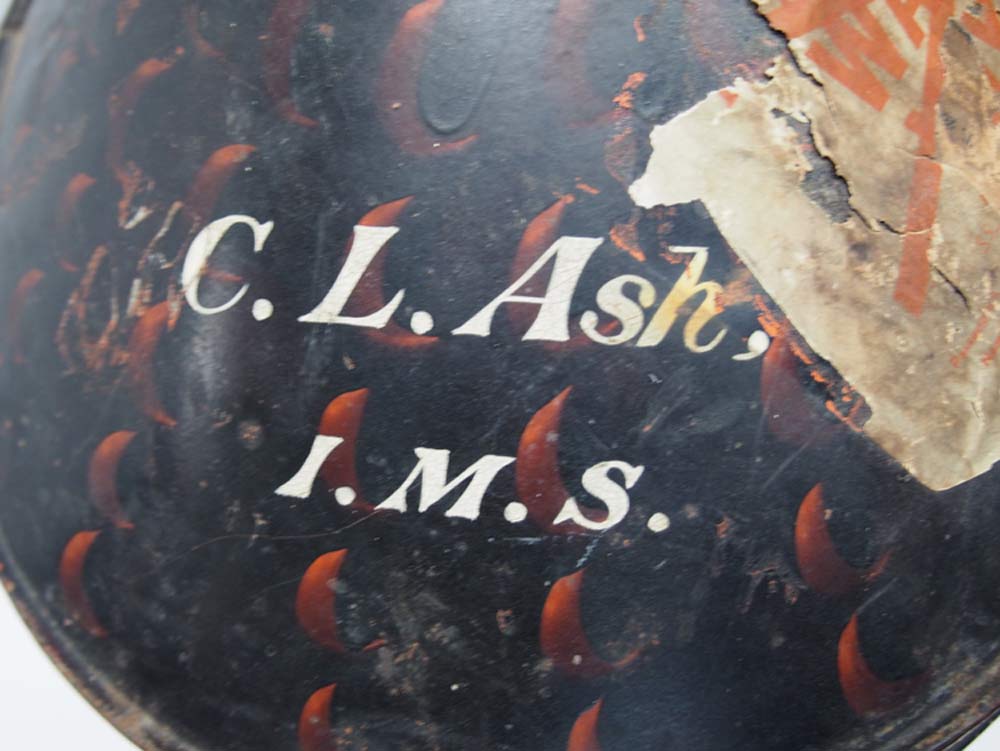
A close up of the name on the tin, “C.L. Ash, I.M.S.”
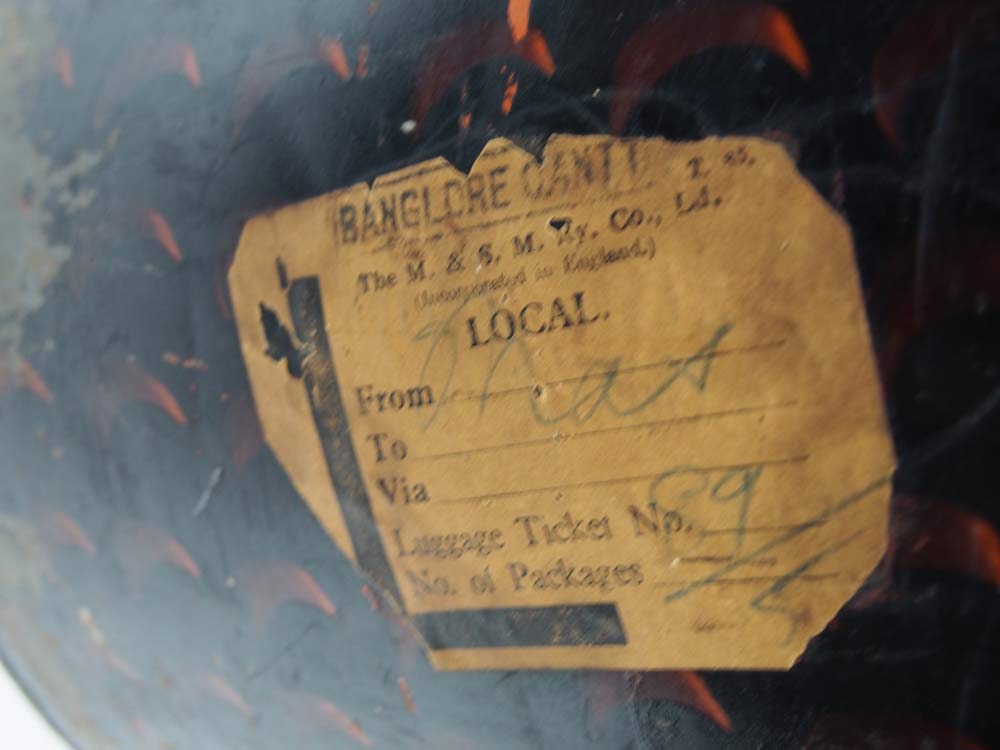
A transport label – destination “Banglore” — possibly meant “Bangalore!”
At this point the story of Lt. Ash of the Indian Medical Service is very much incomplete. We don’t know what he may have done during the Second World War, when he returned to Canada or why the helmet showed up for sale at the Toronto Military Show. However, the helmet and the brief documentation – as well as period photo – highlight that some 84 years ago this young man, a newly trained doctor, wasn’t about to simply practice medicine in Canada. He was up for an adventure that would take him half way around the world.
Peter Suciu
April 2019

Clifford L Ash was my father. So interesting to read your article. That is him in the photo. He was apparently invalided home to Toronto because of “Tropical Sprue”, a very severe bowel infection for which they had no antibiotics to treat it with at the time. He recovered in time, but never went back to India and stayed in Toronto training to be a radiologist and radiotherapist to treat cancer. In the early 1@59s, he was appointed the founding director of The Princess Margaret Hospital on Toronto, now a world renowned cancer treatment centre. He remained as the director and radiotherapist in chief until his retirement in 1974. Upon his death, we donated his helmet and carrying case to The Toronto Military Institute on University Avenue. That is the last I had heard of it.
It is so nice that someone is interested in its history! He and my mother used to talk about their time in India when we were growing up( they had 2 boys and 2 girls- I am the only physician- a retired radiologist and nuclear medicine specialist at the Hospital for Sick Children in Toronto).
Ms. Ash,
I’m the proud owner of your father’s helmet and tin. I purchased it directly from Peter last year, who is one of the worlds leading experts on the military pith and sun helmet. The helmet is currently displayed in my personal collection of British and Canadian militaria. I’ve professionally framed the photo of your father and it hangs on the wall directly over his helmet and tin. It is truly one of my most treasured items. It shares space with other items from the India, Boer War, and Egypt- Sudan campaigns . So thrilled to learn more about your father. He must have been a remarkable man! All the best. Dave